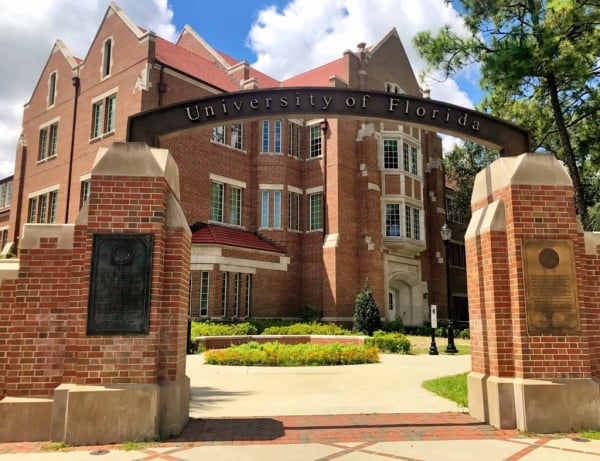
NIH Cuts Mean Job Losses in College Towns
Gainesville, Fla., where the University of Florida is located, would lose an estimated 2,000 jobs if the NIH’s budget is cut by 43 percent, as Trump has proposed.
Some college towns would lose thousands of jobs if the National Institutes of Health implements President Trump’s drastic proposed budget cuts, according to new economic projections published by the Brookings Institution last month.
“Overall, the broader labor markets in which recipient institutions reside could benefit from NIH funding,” said the paper, which used federal data to examine the relationship between local labor markets and NIH funding. “Cutting that funding may be detrimental to the community.”
In 2024, the federal agency spent $26 billion of its $47 billion budget on research grants to more than 500 higher education institutions or their affiliated research centers. The paper found that about 80 percent of the NIH’s budget goes to cities where universities with large medical facilities account for a significant share of the local economy.
Of the 20 labor markets that saw the biggest increases in NIH funding between 2004 and 2023, many were well-known college towns, including Tallahassee, Fla.; Athens, Ga.; and State College, Pa.
And according to the report’s calculations, the local economies that saw a substantial increase in NIH funding during that period also had lower rates of employment decline than those with small increases, no increases or no NIH funding.
The employment trends are the result of both direct and indirect effects of NIH funding.
“When we see an increase in employment, some of that may be coming directly from the NIH-funded activities, like hiring research assistants and lab workers,” said Robin McKnight, an economics professor at Wellesley College and co-author of the report. “But those employees are also going to go to restaurants, the institution needs more services, and a lot of what’s generated through the NIH’s basic scientific research eventually makes its way to pharmaceutical research. And pharmaceutical firms may find it beneficial to locate near NIH-funded institutions.”
More NIH funding also helps to create a more educated—and higher-paid—local workforce, according to the report. Between 2004 and 2023, communities that saw a substantial increase in NIH funding increased their share of college-educated workers by 8 percent, compared to 5 percent in cities with no NIH funding.
But the report also found that President Trump’s proposal to cut the NIH’s budget by 43 percent would cause thousands of job losses in some college towns, including Madison, Wis.; Charlottesville, Va.; and Gainesville, Fla., all of which receive roughly $700 in NIH money per resident in a typical year.
That decline in labor market activity wouldn’t be limited to jobs associated with scientific research in college towns. “[It] would also affect the businesses around them,” McKnight said, adding that it’s unlikely that other businesses would fill the void any time soon. “The nature of NIH-funded research is that it’s usually focused on basic research that private firms don’t have an incentive to do,” she added. “So I wouldn’t expect this to be something that could be entirely filled in by the private sector.”
However, federal lawmakers currently weighing next year’s budget have so far indicated that they don’t want to enact such large cuts. The Senate has proposed increasing NIH’s budget to $48.7 billion for fiscal year 2026, while the House last week proposed cutting it by just $456 million.
Although the Brookings report didn’t calculate projections for the House’s proposed cuts, McKnight said that even a 1 percent cut would “still be expected to have a detrimental effect on college towns,” though “the magnitude of the impact would be dramatically lower and less noticeable than the impact of the originally proposed 43 percent cut.”
At the same time, the NIH has also proposed capping indirect research cost reimbursement rates at 15 percent, down from an average negotiated rate of 28 percent. A federal judge has blocked the plan for now, but research advocates say that if it were to take effect, it would hurt university budgets and slow medical breakthroughs.
“It’s hard to say how [NIH budget cuts] would interact with any decrease in indirect costs,” McKnight said. “If indirect costs are cut, but the overall budget is only reduced by a small amount, then that could potentially soften the blow of the indirect cost cuts by increasing other types of spending.”
Source link

